Although Hades is sometimes viewed as a Satan figure today, he wasn't an evil god who condemned souls to eternal damnation but rather an overseer of the Greek Underworld who sometimes even let the deceased return to the land of the living.
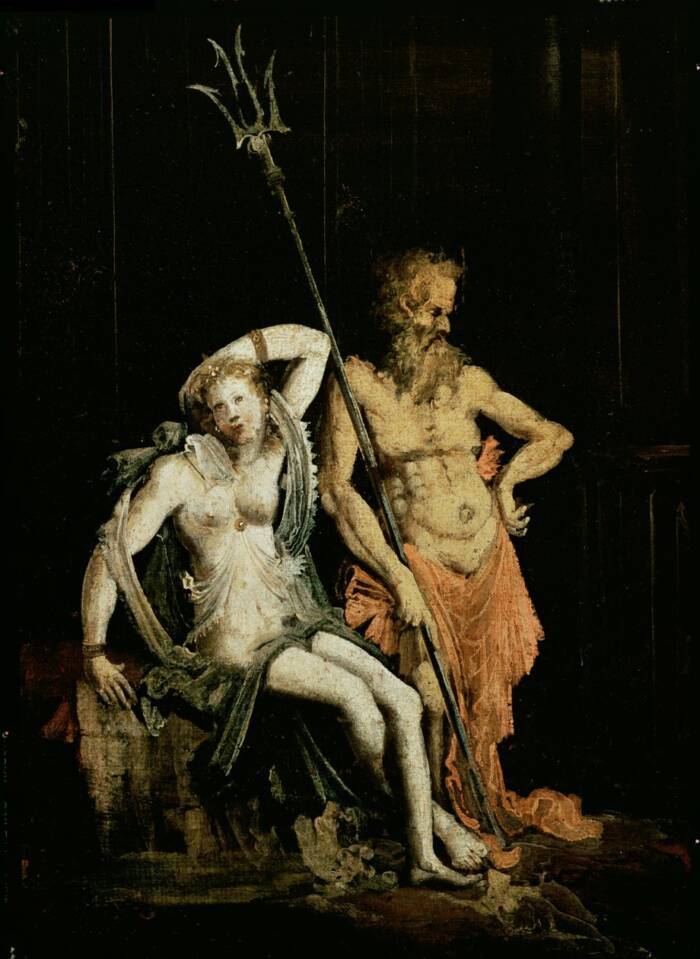
Public DomainHades and Persephone as depicted in the early 17th-century François de Nomé painting Scene of Hell.
Hades, the formidable Greek god of the Underworld, has long intrigued scholars and enthusiasts of mythology. As the overseer of the dead and the guardian of the afterlife, Hades commanded a realm that embodied both fear and respect.
As the “Lord of the Many Dead,” Hades was said to rule alongside Persephone, the goddess he kidnapped from the land of the living and forced to become his queen. His three-headed dog, Cerberus, guarded the gates of the Underworld to keep the dead from escaping.
While Hades is often seen as a Satan-like figure today, he wasn’t typically portrayed as the deity who judged the deceased. Instead, he was a god of justice and balance, maintaining order in his shadowy domain.
Unlike the tales of his more celebrated brothers, Zeus and Poseidon, Hades’ stories were often shrouded in mystery, offering a unique glimpse into the ancient Greek understanding of death and what comes after.
The Birth And Rise Of Hades, The Greek God Of The Underworld
In Greek myth, Hades was the first-born son of the Titans Rhea and Cronus. Cronus had overthrown his own father, Uranus, to rule the cosmos. Terrified of Uranus’ prophecy that one of his own children would overthrow him, Cronus ate each of his offspring, starting with Hades. However, Rhea cleverly hid their last child and tricked Cronus into swallowing a stone instead.
This child, Zeus, would grow to adulthood, free his siblings, and launch a 10-year war against the Titans. Victory left him as the new king of the cosmos, and it was within his power to bestow rewards on his siblings and allies.
Following their victory, the three brothers drew lots to divide the realms of the world among themselves. Zeus received the sky, Poseidon got the sea, and Hades was granted the Underworld.
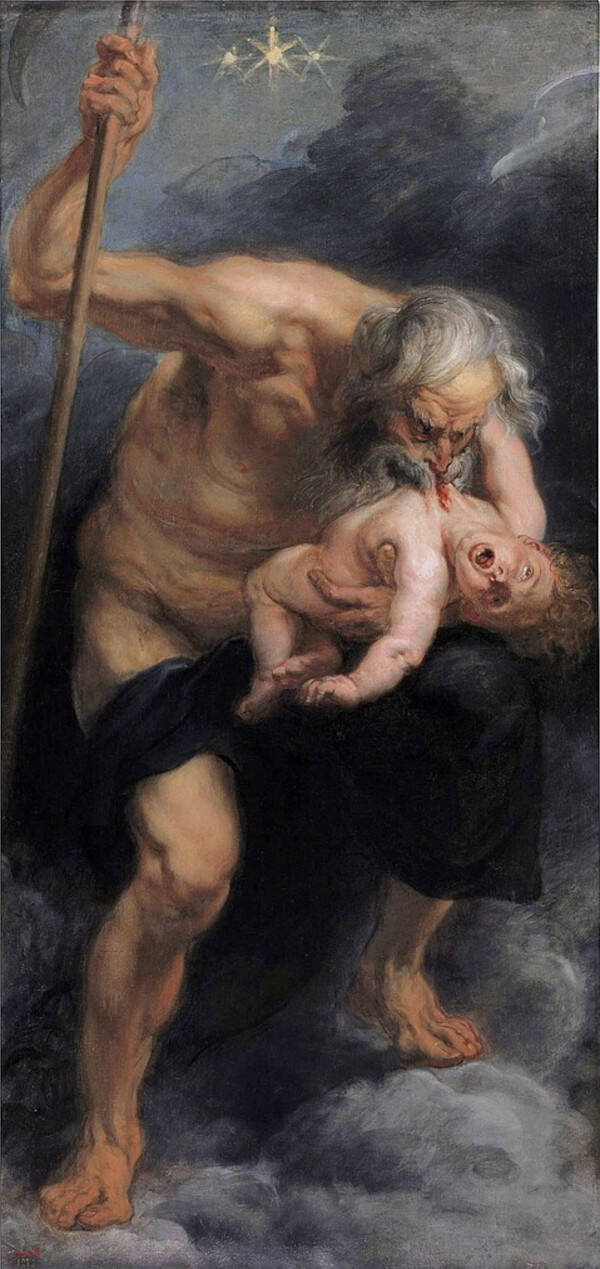
Public DomainSaturn, or Cronus, devouring one of his children in a painting by Peter Paul Rubens.
Hades populated his kingdom with strange and terrifying servants. His personal pet and the guardian of the gates of the Underworld was Cerberus, a three-headed, snake-tailed dog. Cerberus’ sister, Hydra, was an equally fearsome monster with many snakeheads who guarded another entrance to the Underworld at the lake of Lerna.
To pass into the Underworld, the dead had to cross the River Styx. They were carried across by the ferryman, Charon — if they could pay. The myth of Charon led ancient Greeks to put coins in the mouths of their deceased loved ones before they were buried.
Once the dead made it across the Styx, they weren’t judged by Hades. That was the job of the demi-gods Minos, Rhadamanthys, and Aeacus. Those who had led heroic or virtuous lives spent eternity in the Elysian Fields, described by ancient writers as a paradise. Meanwhile, the wicked were sent to Tartarus, an abyss of torment and suffering.
While Hades didn’t determine which souls went to which region, he did dole out punishments for crimes he deemed particularly egregious. The mortal king Sisyphus, for example, was doomed to futilely roll a boulder up a hill for eternity because he tried to cheat death.
Hades didn’t rule the Underworld alone, though.
The Myth Of Hades And Persephone
Hades was a jealous ruler, so he rarely left his kingdom, spending his days ensuring no one ever escaped. However, one day was different. As written in the Homeric “Hymn to Demeter,” Hades fell in love with Persephone, the beautiful daughter of his sister Demeter. While Persephone was picking flowers in a field, Hades burst through a hole in the Earth “riding on a chariot drawn by immortal horses” and kidnapped the goddess to make her his queen.

Public DomainThe abduction of Persephone as depicted by Alessandro Allori (1570). This became a popular subject for artists during the Italian Renaissance.
Persephone’s abduction devastated Demeter, who allowed the world to wither and starve. When Zeus discovered what had happened, he sent his messenger, Hermes, to collect her.
Hermes was by then used to visiting the Underworld, since he was a psychopomp, or “chief conductor of souls” who guided the dead there. But before he could lead Persephone back out, Hades gave her pomegranate seeds to eat. He thus bound her under a cosmic law that stated anyone who ate the food of the Underworld could never leave for good.
Eventually, a deal was brokered in which Persephone would spend part of the year with Hades and the rest with Demeter. When she was with her mother, crops grew, and the world was warm and happy. When she was with her husband, the world was dark and cold, symbolizing the intricate link between life, death, and rebirth. The Greeks may have used this myth to explain the changing seasons.
Hades and his kingdom appear in many other Greek myths, as well. He and Persephone were so moved by the musician Orpheus’ devotion to his wife Eurydice, for instance, that they allowed Orpheus a chance to bring her back to life. And the last of Hercules’ Twelve Labors was to capture Cerberus, which he did after striking a deal to subdue the monster without weapons.
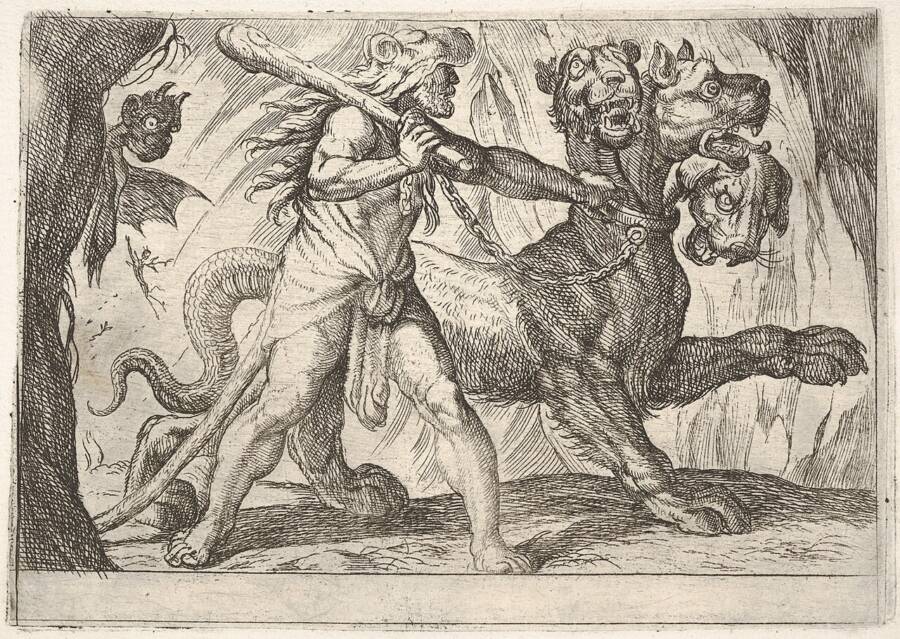
Metropolitan Museum of ArtA 1608 depiction of Hercules subduing Cerberus. Despite his jealousy and coldness, Hades could sometimes be moved by emotion and reason.
It’s clear that Hades was a pervasive figure in ancient mythology. But how did the Greeks really view this powerful god?
How Was Hades Worshiped By The Ancient Greeks?
Unlike other gods, Hades had very few temples dedicated to him. There was the Nekromanteion, or the Oracle of the Dead, at Ephyra and another temple, which was opened only once a year, in Elis. It’s not that the ancient Greeks saw Hades as evil — death was as natural as life, not a punishment but an inevitability. The King of the Dead was fittingly imagined as stern and cold but fair.
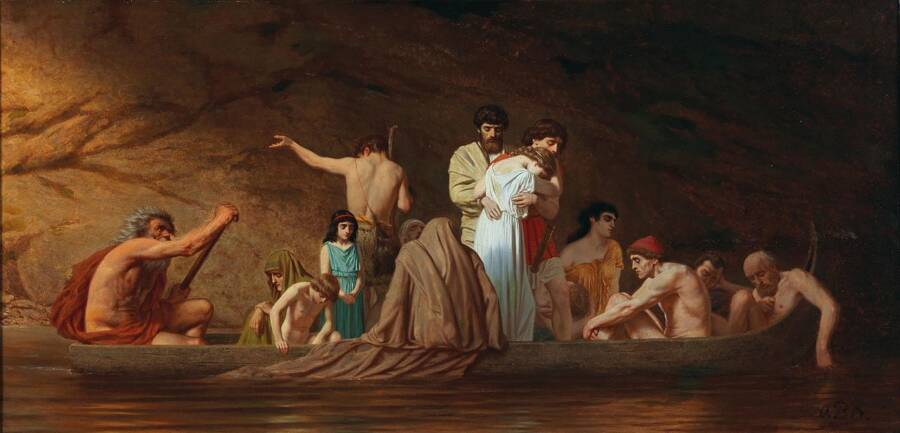
Public DomainCharon ferrying the dead across the Styx. Ancient Greeks buried their loved ones with coins to pay for the passage into Hades’ kingdom.
He was, however, feared. The Greeks, who dared not say his name, came up with a number of alternative names to refer to Hades. One of these was Plouton (or Pluto in Latin), “the wealthy one.” It was from the depths of the Earth that precious stones and metals were dug, and so Hades was thought to be fabulously rich.
In images, Hades was typically depicted with symbols such as the bident, a two-pronged staff, the Helm of Darkness, and Cerberus. As the god of death, he was so feared that many preferred to invoke him as Plouton. In fact, one of the few surviving poems that mentions Hades is the 17th Orphic Hymn, which begins:
Plouton, magnanimous, whose realms profound
are fix’d beneath the firm and solid ground,
In the Tartarian plains remote from fight,
and wrapt forever in the depths of night.
Most ancient Greeks preferred to worship other, more benevolent gods. An exception was during funerals when they poured honey, wine, and water into the ground to honor the deceased and placate Hades.
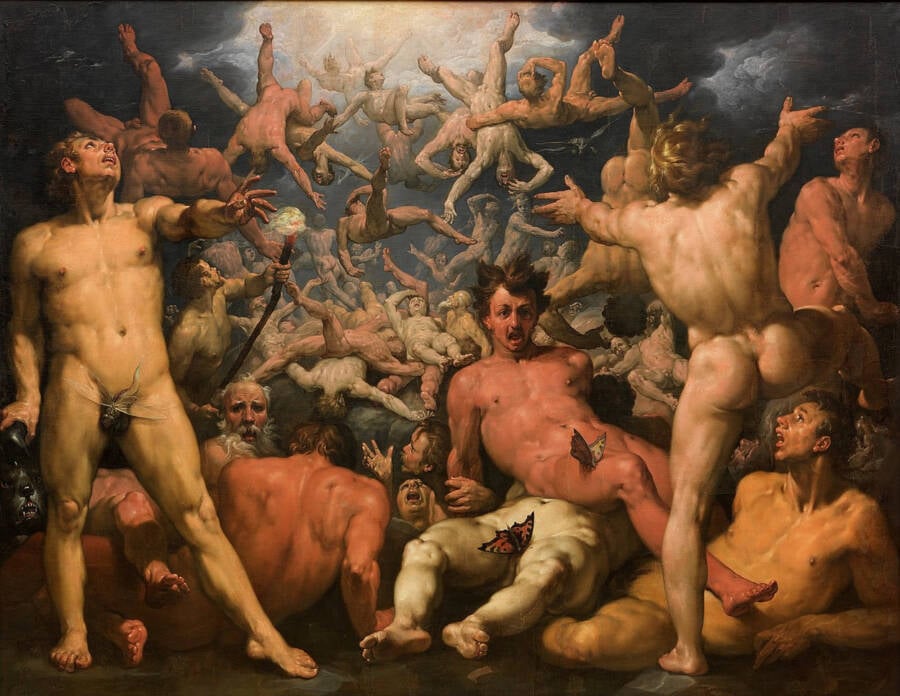
Public DomainThe Fall of the Titans by Cornelis van Haarlem, circa 1590. Hades’ role in the battle between the Titans and the Olympians marked him as one of the most important Greek deities.
But on occasion, the Greeks found it necessary to offer sacrifices to Hades to ask for kind treatment in the afterlife or for riches. These “chthonic” sacrifices took place at night. Worshipers would kill dark-furred sheep and other animals in a trench, or bothros. According to Evy Johanne Håland’s Rituals of Death and Dying in Modern and Ancient Greece, the blood was allowed to seep into the soil while the supplicant looked away and prayed aloud.
Another facet of Greek religious life in which Hades played a part was Anthesteria. During this festival, held in honor of Dionysus, the spirits of the dead were believed to roam the Earth, and participants made offerings to placate these spirits and Hades.
Hades is no longer typically worshiped in his own right, but the deity’s significant place in the Greek pantheon has made him a popular figure throughout history.
The God Of The Underworld In Modern Culture
The ancient Greeks may have been too afraid to give Hades much artistic attention, but the same can’t be said of successive generations. The Italian Renaissance coincided with a surge of interest in ancient myths, and Hades became a fixture in painting and sculpture for centuries. He was usually seen in depictions of the abduction of Persephone. Alternatively, he appeared in artworks portraying the tales of Orpheus or Hercules, but rarely on his own.

Walt Disney PicturesHades as he appeared in the 1997 Disney movie Hercules. To the Greeks, however, Hades was anything but funny.
In the late 20th century, that began to change. For example, a version of Hades, voiced by James Woods, acts as both comic relief and the antagonist in the 1997 Disney film Hercules. He is also a key character in the young adult series Percy Jackson and the Olympians by Rick Riordan. In the books, Hades is a tortured being who is bitter about his rule of the Underworld.
Hades, his kingdom, and his servants have also appeared in other modern entertainment mediums, from video games, such as the critically acclaimed Hades (2020), to Hadestown, a musical retelling of the love story of Orpheus and Eurydice.
Modern interpretations emphasize Hades’ multifaceted nature, portraying him as both a sympathetic figure and a villain. And, if the story of his wife is any indication, people may well be using this ancient, dark deity to explore ideas like love, death, sacrifice, and power for generations to come.
Now that you know the story of Hades, take a look at some other fascinating death gods from cultures around the world: Mictlantecuhtli, the ruler of the dead souls of the Aztecs, and Anubis, the Egyptian god of death and the afterlife.






